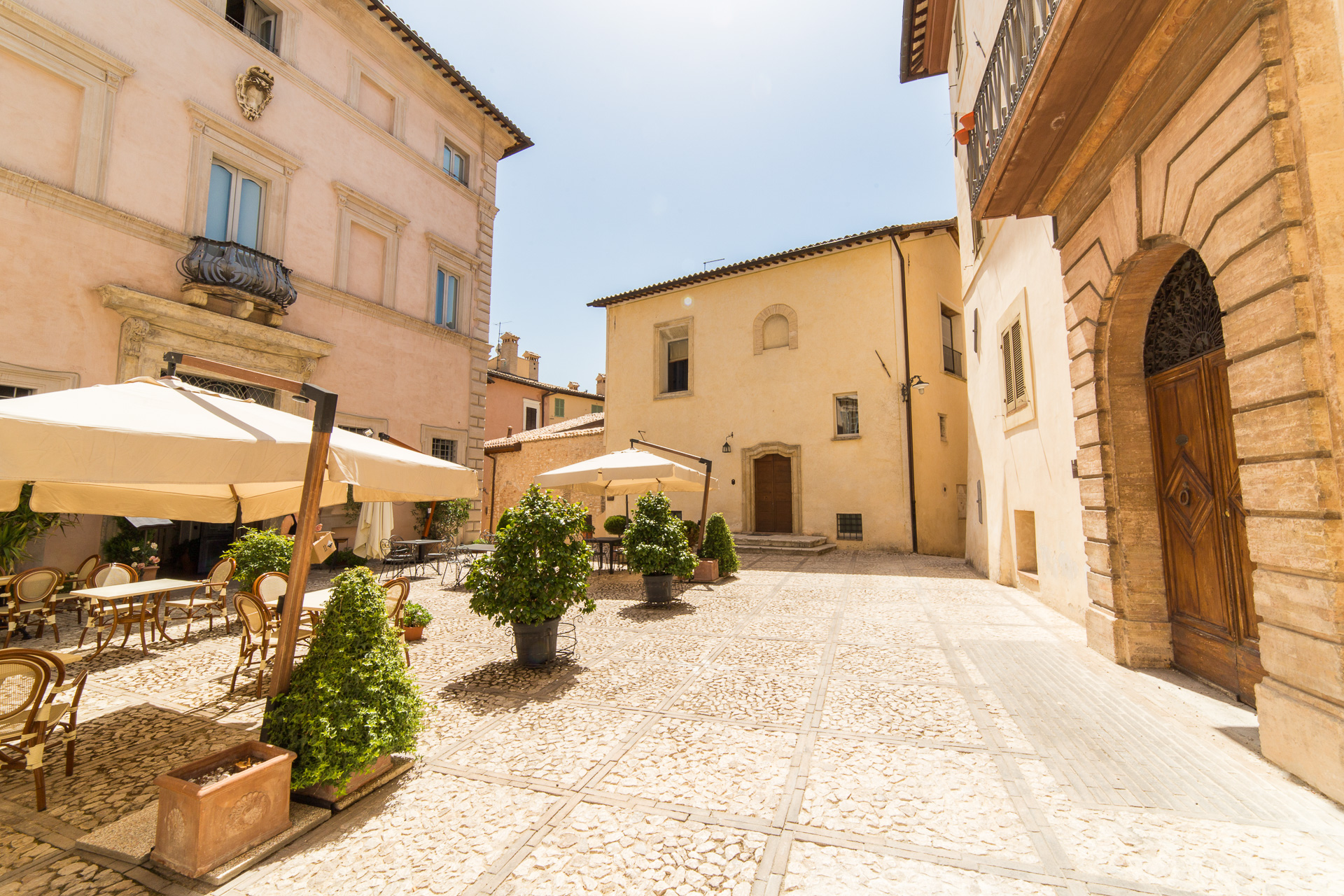
metrage: 340 m2
bathrooms: 2
sleeps: 6
half baths: 1
bedrooms: 3
minimum stay: One week
The present Palazzo Neri as we know it, located on the highest piazza Piazza Della Rocca of the picturesque medieval Trevi, consists of two once separated parts – the Resti Della Rocca and Ex Chiesa Di San Filippo Neri.
Both areas have been restored with lots of respect for their historicial heritage, transforming the location into a luxurious, non-commercial three bedroom mansion, away from the daily buzz of modern big city live.
Although the past has successfully been preserved, all the comforts of modern living have been installed, such as central heating system providing radiant heat beneath the stone floors, two wood and gas fired fireplaces, fully equipped kitchen, entertainment room
equipped with HD television, stereo system enhanced by the acoustics of the house and Wi-Fi connection. In short – The Palazzo offers everything and more to make our guest feel comfortable and at home.
1. Palazzo Neri
The history of the Palazzo begins as a private house donated in 1650 by the priest Antonio Costa to the Congregation of the Philippine Friars to be their church. The new Congregation of Piaggia hosted Church of the Holy Stigmata of St. Francis soon after moving into their house of prayer. Costa donated also a big amount of money to support the priests and to institute an annual prize for three young maids in need of a dowry from Coste, Manciano and Ponze.
The interior of today’s Palazzo can surprise quite a bit after the sight of raw exterior. A blend of the old and new awaits our guests, all in a luxurious yet convenient manner. Despite the necessary adjustments, many of the old elements of the church were incorporated. The lateral window in current kitchen used to serve as a letterbox for the application forms of maids asking for a dowry. This particular one has been used for requests of the Lucarini Lascito – a heritage left by the Lucarini family, managed by the Confraternita delle Stimmate. The impressive 17th century choir and gilded door remained almost untouched.
The center piece of the house dominating over the open atrium living room is a 4 meter high reproduction of Bougereau’s “The abduction of Psyche” surrounded by a beautiful, 3 stories high fresco. The same painter created the ceiling artwork showing classical putti’s.
2. Resti Della Rocca/Remains of the Fortress
Built in the XV century by Corrado Trinci, destroyed by the Trevani when his power fell, the remains of the Trevi Fortress serve today as part of the mansion, holding a large sun terrace with swimming pool area, a glass fitted bedroom with a stunning view over the pool space and a recently restored, burned affresco dated on 1440 of Christ on the cross, Maria on his feet and Giovanni. But the Remains of the Fortress hide far more astonishing secrets of former times. Perhaps one of the most historically meaningful being the Cantina, much older than the Resti Della Rocca itself. This built in the 12th century 30 m2 water reservoir, a so to speak under ground cistern of medieval Trevani, was build to collect as much as 200 m3 of water running down the town’s streets. The curved ceiling, in architectural terms „volta”, remained in impeccable condition till this day – the only removed part is the plaster, showcasing the beauty of original stones that survived over 8 centuries. The Piano Terra, rearranged into a stunning sun terrace with a pool and shower area contrasts with the remains of the ancient walls. Their constructions tells us a story of three once joined properties.